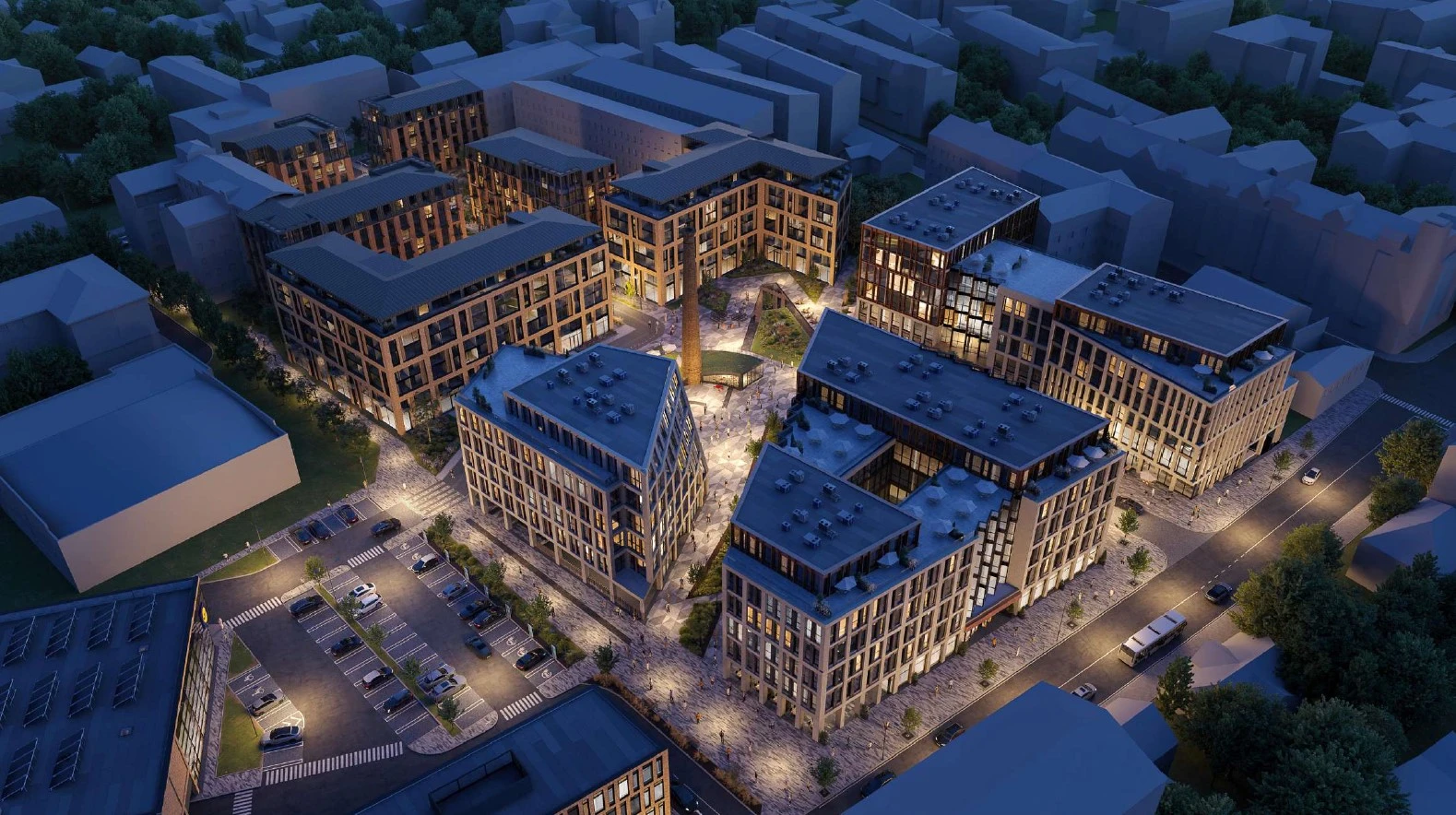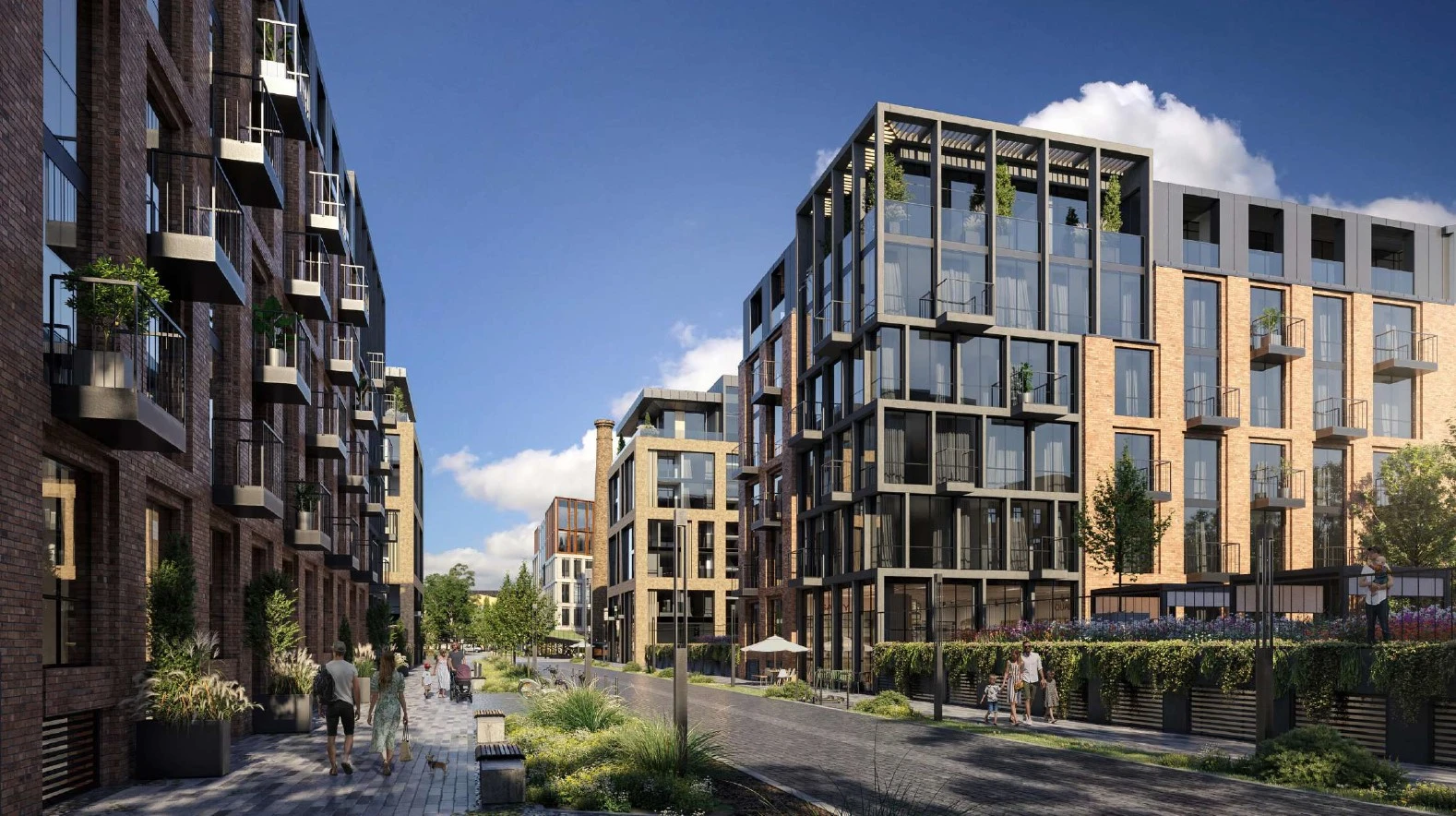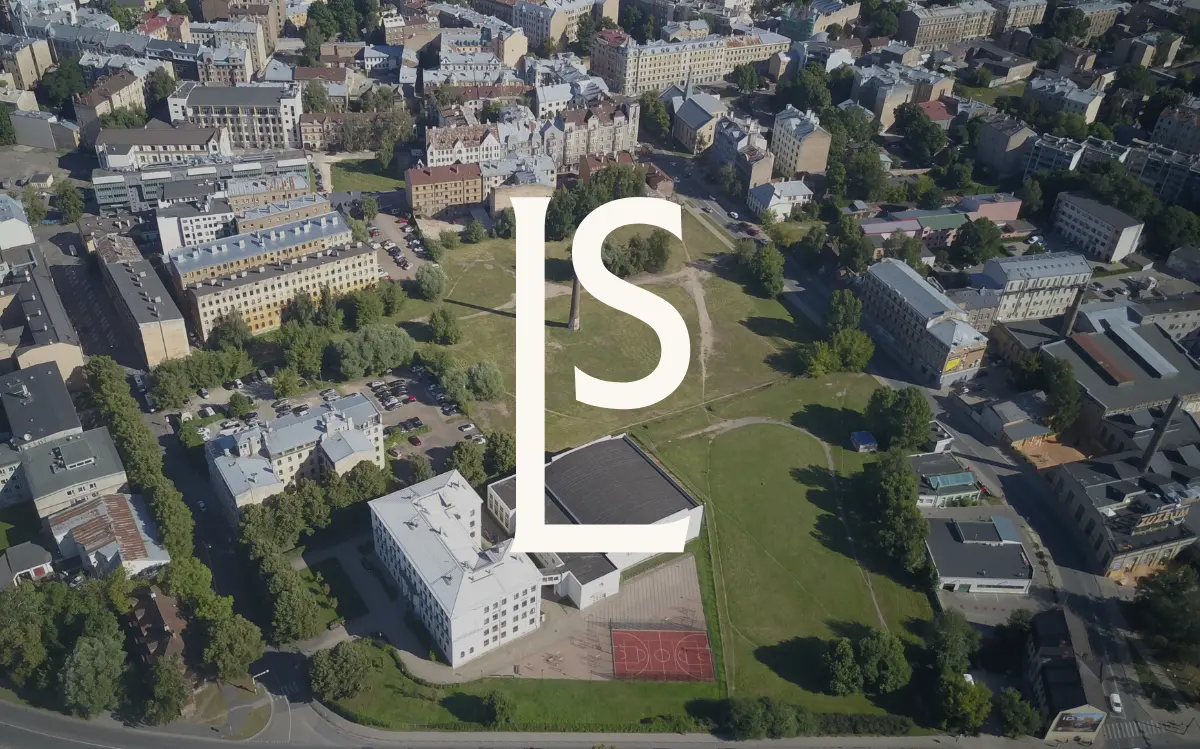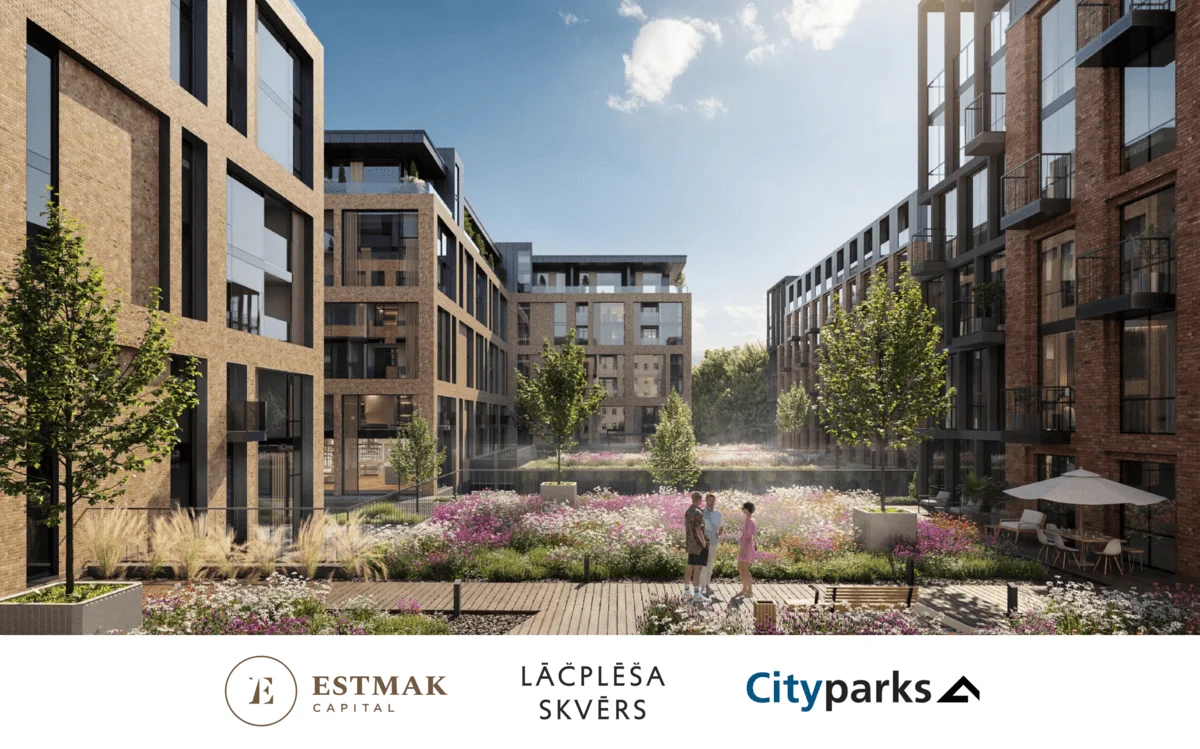Some streets you simply pass through. And then there are those that seem to take you by the hand and lead you along. Lāčplēša is one of those. In spring, it feels especially alive: sunlight rests on its old, austere façades; the first terrace tables appear; the air carries the murmur of the city and the scent of coffee. This street doesn’t call attention to itself — but if you look closely, you’ll see layers of history, architecture, the weaving of time, and many places worth pausing for.
We’ve mapped out a route with five stops — atmospheric, diverse, full of life. Follow it at your own pace, dropping into places locals love and discovering new ones along the way. And let it end with a look toward the future: Lačpleša Skvērs — a space already beginning to take shape in the heart of the district.
Zuzeum Art Centre — a terrace with a view of art and sky
At the far end of Lāčplēša Street, where the city’s rhythm softens just a little, you’ll find Zuzeum — a contemporary art space housed in a former cork factory. Inside is the largest private collection of Latvian art, along with temporary exhibitions, workshops, and a vibrant cultural programme. Outside, a spacious terrace opens up to views of the tower, the sky, and Riga’s rooftops.
We recommend pausing here: take a tea or coffee, pick a book from the thoughtfully curated collection — and head up to the terrace. Morning sun, the crisp pages of a new book, the rich taste of your drink, and the soft murmur of the city — it’s the kind of place you want to stay just a little longer. From the rooftop of Zuzeum, you can feel it clearly: Lāčplēša can be modern, intelligent, and warm — all at once.

The “Witch’s House” — a northern fairytale in stone
At Lāčplēša 100, the street takes on a magical tone — here stands a building that locals call the “Witch’s House.”
Built in 1910 by architect Nikolai Yakovlev, this rental house became a striking example of northern Art Nouveau inspired by folklore. The central feature of the façade is a relief of a witch on a broomstick, which gave the building its popular name. On either side are stylised firebirds, and in the kokoshnik arch, a fresco unfolds showing a harsh northern landscape reminiscent of Ivan Bilibin’s illustrations. Completing the fairytale composition is an image of a medieval fortress, as if guarding ancient traditions.
It is the only building in Riga with such a vivid folkloric design. This is a place to stop and look closely: Lāčplēša has many historic buildings, but this one has a uniquely mythical soul.

Riga School of Design and Art — wood and the warmth of tradition
A building where centuries pass and eras change — but meaning remains. This is the Riga School of Design and Art, a unique monument of wooden architecture, originally built in 1819 as a boys’ school.
The true value of this place lies in the continuity of its educational tradition. Since the early 20th century, it has trained future artists and designers, passing on not only craft skills — working with wood, glass, and metal — but also a culture of thoughtful care for the visual environment.
The 2014 restoration, led by architect Zaiga Gaile, became a benchmark of respectful renewal: the historic log walls, original stove heating, and even the signature of Prince Henrik of Denmark — left on the rafters during his 2001 visit, when the building was under threat of demolition — were all preserved. New elements, such as the attic windows, were integrated with care, highlighting the dialogue between past and present. The project was awarded the Grand Prix of the Latvian Architecture Award, and its interiors — where raw wooden beams meet modern studios — have become a standard of restoration excellence in Riga.

Jaunais Rīgas Teātris — a stage of change
At Lāčplēša 25 stands a building where theatre has been thriving for over a hundred years — since 1908. This is where the New Latvian Theatre was born — the cradle of national drama, where works by Rainis, Aspazija, and Blaumanis were first staged. In 1920, the Dailes Theatre took over the space; from 1977 to 1992 it was home to the Youth Theatre; and since 1992, it has been the home of the contemporary Jaunais Rīgas Teātris (JRT).
Today, the theatre is known far beyond Latvia. For the past 32 years, it has been led by Alvis Hermanis — a director whose productions travel from Vienna to Paris. JRT remains a stage where form and content are inseparable, and theatregoers are always participants — never passive spectators.
Even if you’re not planning to attend a performance, it’s worth pausing at the entrance: the architecture, the posters, the sense of time. And if you do make it to a show, Lāčplēša Street will reveal itself on a much deeper level.

Lačpleša Skvērs — where the future gathers
A walk along Lāčplēša ends at a place where the city speaks not only of what has been, but of what’s to come. This is where Lačpleša Skvērs is beginning to take shape — a large-scale, forward-looking project creating a vibrant, diverse neighbourhood for living, working, and relaxing, just outside Riga’s centre.
The project is inspired by the area’s industrial past: its architectural concept draws on the aesthetic of historic brick buildings and the varied development of the late 19th century. In this dynamic setting, ten new buildings will rise — six residential and four office buildings. The ground floors will host cafés, shops, and other commercial spaces open not only to residents but to the entire city.
A 100-space parking area is already available, and soon the site will feature green courtyards, an event plaza, and comfortable areas for pedestrians and cyclists. At the heart of the quarter, an old industrial chimney will remain — a visual landmark and a symbol of respectful continuity.
Lačpleša Skvērs is more than a new point on the map. It’s a unique opportunity to live in a place where work and leisure come together with ease. This integrated approach creates a healthy balance between the personal and the professional — and continues the spirit of Lāčplēša Street: with respect for the past and care for the city of the future.

The end of the route — but not the story
Lāčplēša is a street where the past doesn’t fade into the background — it becomes the foundation for what’s next. Buildings from the late 19th century stand alongside contemporary cultural spaces; wooden façades meet design studios; a century-old theatre coexists with a new urban quarter in the making.
All of it forms a single living organism, where past and present speak the same language.
These five stops are just a reason to look a little closer, walk a little slower, and feel how the space around you begins to come alive.
Follow the development of Lačpleša Skvērs — the future focal point of the neighbourhood — and share your own walk along Lāčplēša Street on social media. Who knows — you just might help someone else begin their journey with this street and its character.



